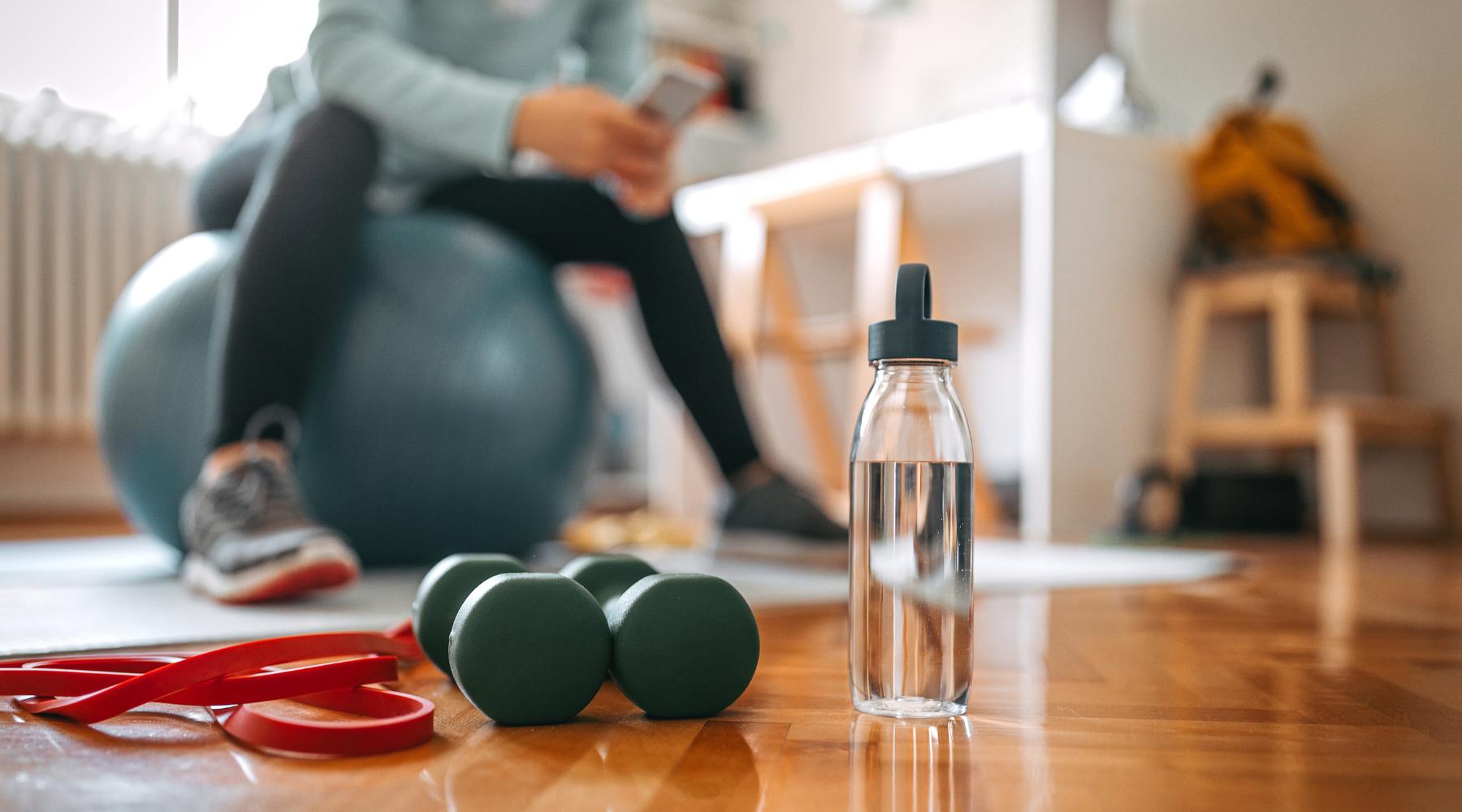In the era of fitness trackers and high-intensity workout regimes, it's easy to get caught up in the notion that only structured, rigorous exercise routines lead to optimum health. However, this perspective can be limiting and sometimes intimidating, overshadowing a fundamental truth: every form of physical activity, regardless of its intensity or structure, plays a vital role in our health and well-being.
From a brisk walk in the park to dancing in your living room, all movements have a crucial role in maintaining and enhancing our well-being.
Let’s broaden the narrative, shifting the focus from the pursuit of the 'best' or most intense exercise to embracing a diverse spectrum of physical activities. By debunking the myth that only certain types of exercise are valid or worthwhile, we'll explore how incorporating a variety of movements into our daily lives can lead to substantial health benefits. We'll delve into how even seemingly insignificant activities can add up to significant health improvements, ensuring a more inclusive and accessible approach to staying healthy and active.
In doing so, we're not just promoting a healthier lifestyle, but we're also advocating for a more joyful, varied, and sustainable approach to physical fitness, one that recognizes the value in every step taken, every weight lifted, and every dance move made.
The Broad Spectrum of Physical Activity
When we think of physical activity, our minds often jump to images of gyms, running tracks, or yoga studios. However, the spectrum of beneficial activities extends far beyond these traditional settings. Daily life is filled with opportunities for movement that can positively impact our health, from the rhythmic sweep of a broom to the steady climb up a flight of stairs. These everyday activities, often overlooked, are the unsung heroes of our health and well-being.
Recent studies have shed light on the broad range of activities that can benefit our health. For instance, researchers have found that routine tasks like gardening, cleaning, and even playing with children or pets can significantly contribute to our daily exercise quotas. These activities may not always raise your heart rate as much as a spin class, but they increase overall physical activity levels, which is crucial for health maintenance and improvement.
Structured workouts, while undoubtedly beneficial, are just one piece of the puzzle. Integrating movement into our daily lives can be just as impactful. A study published in The Lancet Public Health found that short bursts of activity, even as little as one or two minutes at a time, accumulated throughout the day can have substantial health benefits. These can include improved cardiovascular health, stronger muscles, better mood, and even a longer life.
Moreover, varying your activities can prevent the monotony that sometimes accompanies a strict exercise regimen. Mixing high-energy activities like running or team sports with lower-intensity, enjoyable activities like walking in a park or casual biking ensures a more balanced approach to physical health. This variety not only keeps the body guessing and adapting but also caters to different energy levels and moods, making it more likely that you'll stay active in the long run.
The key takeaway from recent research is clear: all movement counts. Whether it's a structured HIIT workout, a brisk walk around your neighborhood, or simply choosing to take the stairs, every bit of activity contributes to a healthier you. By recognizing and valuing the broad spectrum of physical activities available to us, we can create a more inclusive and realistic approach to fitness, one that celebrates every move we make towards better health.
Accessibility and Inclusivity in Exercise
Traditional forms of exercise often come with barriers that can make them less accessible to many people. The cost of gym memberships, fitness equipment, or even the transportation to get to a fitness facility can be prohibitive. Additionally, some individuals may feel intimidated by the gym environment or unable to participate in certain activities due to physical limitations or lack of available options in their area. These barriers highlight the importance of finding accessible and inclusive ways to stay active.
Incidental activities, the movements we perform as part of our daily routine, present a valuable opportunity for exercise that is often overlooked. Simple actions like walking to the store, taking the stairs instead of the elevator, gardening, or even vigorous cleaning are forms of physical activity that can contribute to our overall health. These activities don't require special equipment or a significant time commitment and can be easily integrated into most people's daily lives.
Embracing incidental activities as valid and beneficial forms of exercise is crucial in making fitness more accessible and inclusive. By recognizing the value of these everyday movements, we can break down the barriers to traditional exercise and create a culture where everyone has the opportunity to engage in physical activity. This inclusive approach not only promotes better health on an individual level but also fosters a more health-conscious society.
Busting the Myths of Required Intensity and Duration
A common misconception in fitness is that only high-intensity workouts for extended durations yield health benefits. Many believe that if you're not drenched in sweat and out of breath, you're not doing enough. However, this belief overlooks the significant benefits that can be gained from lower-intensity activities and shorter exercise periods.
Recent evidence suggests that the 'all or nothing' mindset is unnecessary and sometimes even counterproductive. Studies indicate that even low to moderate-intensity activities, when performed regularly, can substantially improve health. For instance, a brisk 20-minute walk or a short cycle around your neighborhood can enhance cardiovascular health, boost mood, and improve metabolic function. The American Heart Association has acknowledged that something is always better than nothing, emphasizing that doubling or tripling shorter bouts of activity can lead to substantial health benefits.
This shift in understanding is particularly important for those who find high-intensity workouts intimidating or unachievable due to health conditions, age, or lifestyle constraints. By busting the myths of required intensity and duration, we can encourage a more inclusive approach to fitness, where every bit of activity is valued and celebrated. This perspective not only makes exercise more accessible but also helps build sustainable habits that contribute to long-term health and well-being.
Realistic Goals and Enjoyable Activities
Setting realistic and achievable goals is crucial for maintaining motivation and ensuring long-term commitment to physical activity. It's essential to consider individual capacity and constraints, such as current fitness levels, time availability, and personal preferences. Instead of aiming for an overly ambitious workout regimen, start with attainable objectives that can gradually become more challenging as your fitness improves. For example, if you're new to exercise, you might begin with a daily 10-minute walk and slowly increase the duration and pace over time.
Finding activities that you genuinely enjoy is equally important. Enjoyment is a powerful motivator, and when you like what you're doing, you're more likely to stick with it. Explore different types of physical activities and consider what makes you feel good, whether it's dancing, swimming, biking, or playing a sport. The key is to keep experimenting until you find activities that fit your lifestyle and bring you joy.
Additionally, mixing up your routine can prevent boredom and keep things interesting. Try new classes, change your walking route, or invite friends to join you in your workouts. By setting realistic goals and focusing on enjoyment, you'll create a sustainable and pleasurable fitness routine that you'll be eager to maintain over the long term, leading to better health and a more active lifestyle.
Read more: 5 Signs It's Time To Update Your Workout Routine
Remember that every bit of activity counts towards your health. Embrace enjoyable, personal ways to stay active and view daily tasks as opportunities for movement. Start rethinking your routine today, and take those small, significant steps towards a healthier, more vibrant life. Let's get moving!



